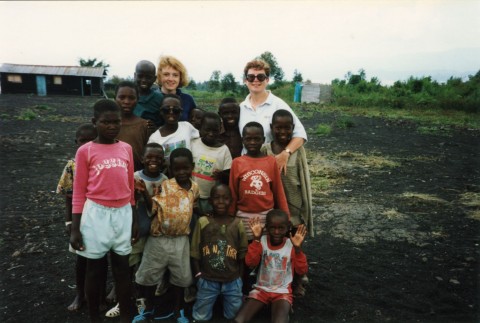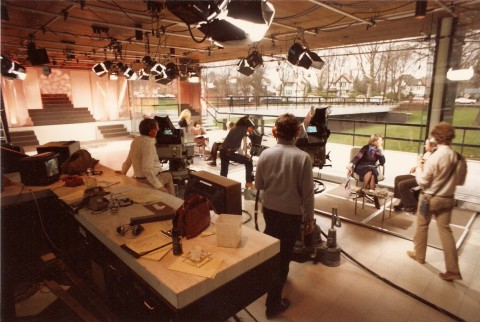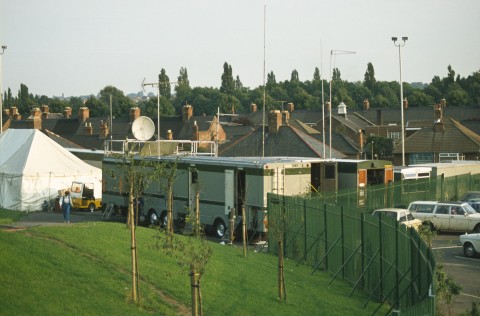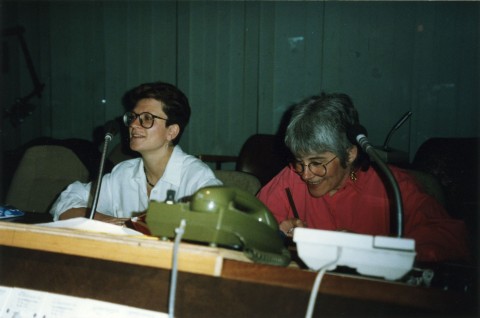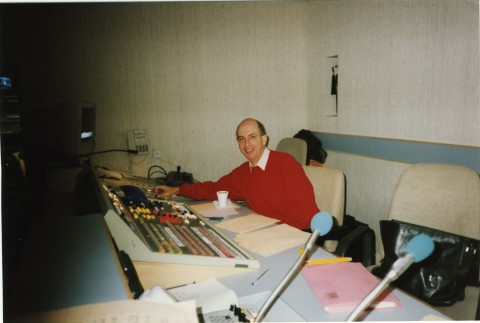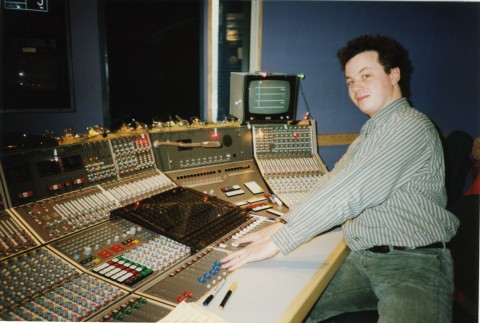Today it is the 70th Anniversary of D-Day, the beginning of the end of WWII.
I remember the 50th Anniversary of D-Day in 1994. I was an assistant producer on Good Morning with Anne and Nick. The D-Day Anniversary was an important topic for Good Morning, and one that we wanted to cover with a live outside broadcast from Normandy. I think that we were going to borrow an existing BBC Events OB unit which was going to be covering some of the events later in the day. They initially said that that was going to be fine, and then decided a day or two before D-Day that they would be too busy to help us out, so we had to organise our own OB!
My job was to be the producer back in Birmingham, in case anything went wrong. We had a whole parallel script made up of links and short films, to go to, if the OB link went down. I think that Will Hanrahan was one of the standby presenters, and I can’t remember who else joined him on the sofa. I was ever so slightly terrified, as I had never produced a live show in the gallery before – but all was well, and the OB signal behaved itself, and I just sat in Gallery C, and followed the dummy running order and script I’d spent days perfecting, alongside the live OB.
Vanessa Jackson
The following comments were left on the Pebble Mill Facebook Page:
Sharon Fisher: ‘I remember! My first OB. Vidal Sassoon was being interviewed and I was busy doing specially printed red white and blue viewer response cards.’
Caroline Feldon: ‘My first OB was for Radio 3 at the Cheltenham Festival. A week or so of fab concerts at the Town Hall and Pittville Pump Room with legends such as Mark Decker, Tony Wass, Steve Portnoi and anyone remember Alan Ward?’
Paul Hunt: ‘Tom Horsfield and I were there in 1994 by Southsea castle looking out across the Solent with Tony Wadsworth and Julie Mayer to do a live OB for WM. We had a very early start to do our rig – once done we had some time to take in the immense scale of what we part of and what we were remembering. Tom then took some photos of the flotilla of ships including the Canberra, the QE2 and the George Washington aircraft carrier. The OB went without a hitch. As we de-rigged we discovered that Tom’s camera had been stolen from the OB van – which put a sad end to such a memorable event.’
Katie Wright: ‘I think you’re thinking of the Dunkirk anniversary Vanessa Jackson. We were on board HMS Alacrity, escorting the little ships across from Dover to Calais…. Phil Thickett was with me.. And Helena Taylor. My father was on the beaches and it was a real honour to remember him and all the others and the many who risked their own lives to rescue them. We had to get Alacrity to sail at a strange angle to keep ‘line of sight’ to our vehicle on the white cliffs, which would explain why you were on standby throughout. ‘

